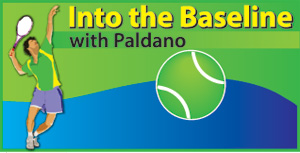Australian Open’s challenging week
The first Grand Slam of the year, the Australian Open (AO) Tennis comes in the 3rd week of January in the WTA/ ATP Calendar. It has to be considered abrupt for the reason that, the 2 preceding weeks are never enough for good players to come into top playing form after the annual recess of 2 months. Being the beginning of the season, not many players take the challenge of a Grand Slam too well. This year, 12 players from the USA, a big Tennis playing country, packed their bags for home on the very 1st day. Among them is Venus Williams. They were not beaten by better Tennis but, by the poor form they are in.
‘Heat’ and ‘Wet ball’ guide
The AO is held in the summer of the southern hemisphere. January is the hottest month in Melbourne, the venue of the event. Although the average temperature is meant to be between 26 to 32 degrees centigrade, it is common for it to hit 40. Last week, on Tuesday, the temperature went to 37, and some players paid a price, unable to bear the heat. Apart from the players, heat affects the bounce and speed of the ball, and the surface of the court too, can become difficult to move on. The AO has 3 retractable courts to accommodate this issue, but the early rounds of the event cannot accommodate all the matches into it.
In fact, the AO is the only Grand Slam with a ‘heat policy’ in perspective all the time. It affects the players to that extent. Adding to this, they also have the so called ‘Wet Ball’ scale, which is an indicator of heat/humidity situation. The tournament uses these to stop and start play. Playing form is not the only issue players will face in this Grand Slam event. The suspense of hanging in, not knowing when the match will begin, causes much anxiety and stress, which affects performance.
The challenges to the AO organisers are enormous. The Singles draw has 128 entries in each gender. Being a Grand Slam event, the Men’s matches are best of 5 Sets. Such matches can exceed 5 hours. In the same manner, Women’s matches can go up to three-and-a-half hours. At the end of the first 2 rounds, there will be 292 winners, which means 292 matches will have to be played in 2 to 3 days, to get this done. This pushes scheduling, court logistics, officiating, crowd control and security, in the first week, to their limits.
Rise and fall of names
The Seeding of the players, that is placing high ranked players to meet in the latter rounds, for better matches, often does not happen. Today, the difference between player playing-standard, between top 20 and the rest in the 100, is negligible. In skills, they are very much closer and the difference will be noticeable only in the areas of tactical maturity, speed of movement, endurance to stay in the match longer and to concentrate continuously. In Tennis, which has no time restriction, a match can be turned around from being down Match Point. This makes Tennis a sport without certainties, in any moment of the match. Many top payers get eliminated before the 3rd round due to this.
Last year, the professional circuit saw many in the top 5 of the ranking, lose with poor form, injuries and fatigue. Among women, Kerber was the most noticeable, with Pliskova and Halep also showing this trend. In the Men’s, the list was longer. Murray, Djokovic, Wawrinka and even Nadal’s and Federer’s name will have to be mentioned here. This created a dent in professional Tennis’ popularity.
 Few New-Generation (New-Gen) players dominated the events and the media went into it in a big way. In a way the professional bodies faced crisis with older players and created an event for the New-Gen players. This AO saw the first performances of Djokovic and Wawrinka after a lapse of 6 months. Among Women, Sharapova is staging her comeback after the suspension.
Few New-Generation (New-Gen) players dominated the events and the media went into it in a big way. In a way the professional bodies faced crisis with older players and created an event for the New-Gen players. This AO saw the first performances of Djokovic and Wawrinka after a lapse of 6 months. Among Women, Sharapova is staging her comeback after the suspension.
Martha Kostyuk of Ukraine
There was a record broken after twenty long years, when Ukraine’s 15-year-old Kostyuk, currently ranked 514, beat China’s much favored Peng Shuai in the 1st round, and Australia’s Rogowska in the 2nd round. The player who made this kind of impact in the past was Martina Hingis of Switzerland, 21 years ago in 1996. Kostyuk is managed and coached by current Federer coach Ivan Ljubicic of Croatia. Strangely enough, Kostyuk will have to play her countries number one player Svitolina in the next round. There is an ever-increasing number of New-Gen players now. However, appearance and disappearance of teenagers is common in Tennis. The inspiration of the professional tour and the excitement of the global Tennis has continuously kept growing in the past 20 years. The older players are hanging in to make the extra buck, which may not be good in the long run. After their careers are over, players will have to live with their reputation. For this to be good for a lifetime, they better know, ‘when to leave the party’. Staying too long can ruin their popularity, which they have gained working very hard for a long time.
-George Paldano, Former int. player; Accredited Coach of German Federation; National coach Sri Lanka & Brunei, Davis-Cup, Federation Cup captain/coach– contact 94 77 544 8880 geodano2015@gmail.com


